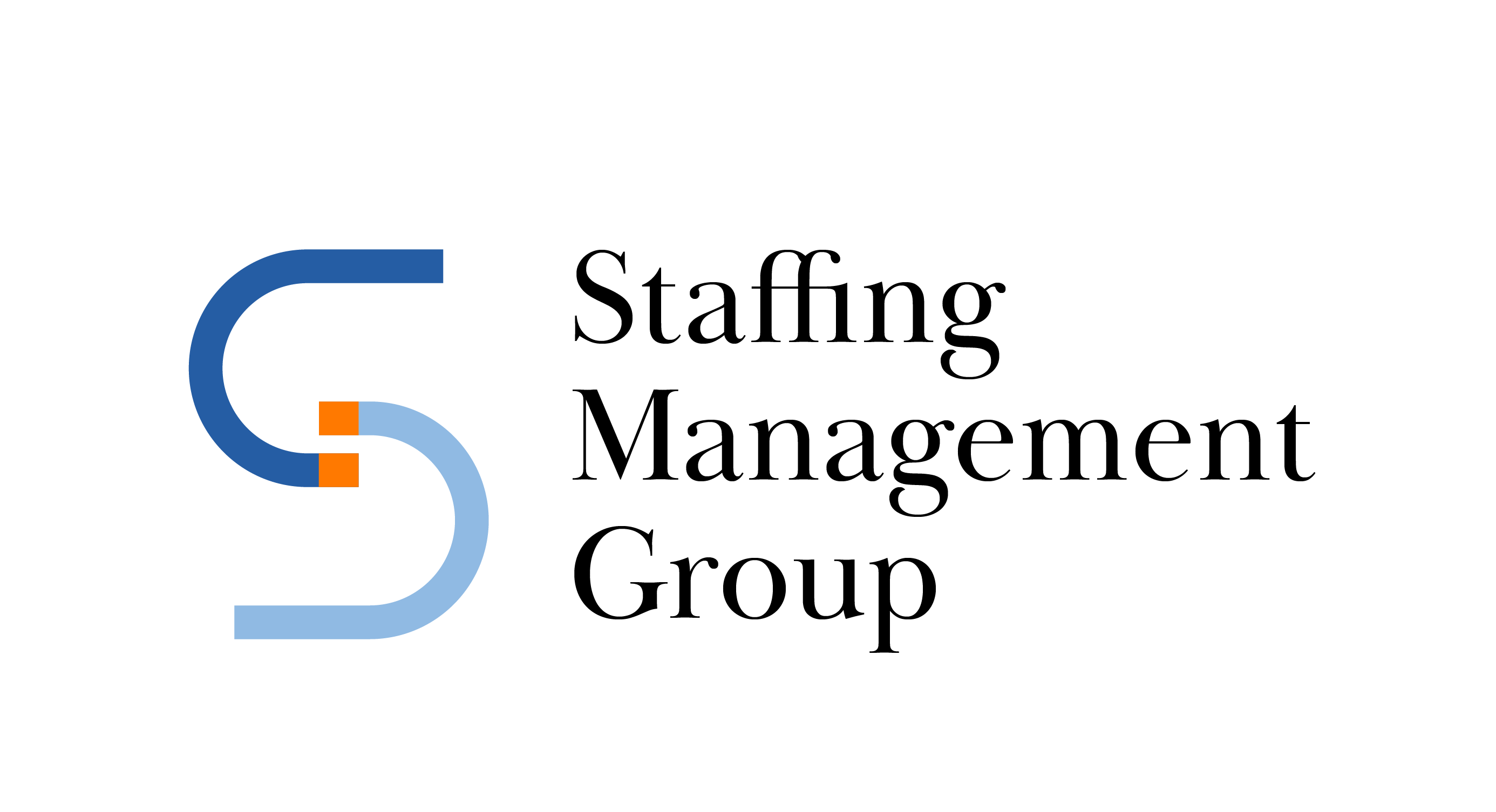The 2025 Staffing Outlook: Where the Industry is Headed Next
The staffing industry stands at a crossroads as we approach 2025. With AI adoption surging among 67% of talent acquisition professionals, skills-based hiring replacing degree requirements, and work-life balance overtaking salary as employees’ top priority for the first time in over two decades, the landscape is transforming at breakneck speed. Meanwhile, organizations are navigating economic volatility while embracing contingent workforces, with 76% of companies now utilizing freelancers or contractors to build more adaptable teams.
For staffing agencies, these shifts represent both a challenge and an opportunity. As technology advances and workforce expectations evolve, how will successful firms position themselves in this new reality? The thriving agencies will balance AI-enhanced processes with human insight, develop robust skills assessment frameworks, and position themselves as strategic partners rather than mere talent providers. In the words of industry leaders, the key to success in 2025 will be “progress over perfection” as we collectively adapt to meet rapidly changing workforce needs.
The Evolving Role of AI in Recruitment

Current AI adoption rates and concerns about impersonality
AI is no longer knocking on recruitment’s door—it’s sitting at the desk. By 2025, nearly 65% of staffing agencies will use some form of AI in their recruitment processes. But here’s the rub: candidates are tired of talking to robots.
The feedback is clear. Candidates feel like they’re dropping resumes into a digital black hole. They miss the human connection. And honestly, who can blame them? Nobody wants to pour their career hopes into a form that generates automated responses.
Staffing firms are caught in a weird spot: They need efficiency but lose the personal touch that actually closes deals.
AI’s limitations in high-level talent acquisition functions
Here’s something the AI vendors won’t tell you: algorithms still stumble regarding executive and specialized recruiting.
AI tools can screen resumes all day, but they struggle with nuance. They can’t read between the lines of a resume or pick up on those soft skills that often make the difference at senior levels.
The data backs this up. For roles above $150K, human recruiters outperform AI-only approaches by significant margins.
Opportunities for staffing agencies to balance technology with human insight
This gap isn’t a problem—it’s your golden opportunity for 2025.
Smart staffing agencies are finding the sweet spot: using AI for repetitive tasks while keeping humans front and center for relationship building. Next year, the winners will be those who can say, “Yes, we use cutting-edge tech, but we’ll never automate your career conversations.”
Some agencies are already killing it with this hybrid approach, showing 30% faster placements while maintaining higher satisfaction scores.
The Shift to Skills-Based Hiring

The Shift to Skills-Based Hiring
Gone are the days when fancy degrees and decades of experience topped every hiring wishlist. By 2025, we’re looking at a completely different game—one where what you can do matters more than the credentials on your resume.
A. Decreasing degree and experience requirements in job listings
Check out any central job board these days and you’ll notice something: those “Bachelor’s degree required” tags are vanishing faster than free donuts in the break room. Companies finally realize that great talent doesn’t always come with a diploma.
Tech giants like Google, IBM, and Apple have already dropped degree requirements for many roles. Why? Because they’ve figured out that coding wizards, marketing geniuses, and sales rockstars exist everywhere, not just in university alumni networks.
B. Challenges in implementing skills-based hiring approaches
Here’s the catch—switching to skills-based hiring isn’t as simple as flipping a switch. Recruiters are struggling with:
- Figuring out which skills predict success
- Convincing old-school hiring managers to take chances on non-traditional candidates
- Creating fair assessment methods that don’t accidentally favor certain groups
Plus, many applicant tracking systems still filter by keywords like “MBA” or “10+ years experience.” The tech just hasn’t caught up with the philosophy yet.
C. Creating skills assessment frameworks for clients
Smart staffing agencies aren’t just riding this wave but leading it. Forward-thinking recruiters are building custom skills assessment frameworks that:
- Map specific competencies to job success
- Use real-world simulations instead of hypothetical interview questions
- Incorporate AI tools to remove unconscious bias
- Validate results against actual performance metrics
Changing Workforce Priorities and Expectations

Now that we’ve explored how organizations are shifting toward skills-based hiring practices, it’s equally important to understand the changing priorities and expectations of the workforce these companies are trying to attract.
Work-life Balance Surpassing Pay as a Top Motivator
The traditional hierarchy of workplace motivators is undergoing a fundamental shift. While competitive compensation remains important, work-life balance has become paramount for employees across generations. Recent global events have accelerated this transformation, prompting workers to reassess their priorities. Companies that recognize this shift prioritize holistic employee well-being, encompassing mental, physical, social, and financial aspects. Organizations that invest strategically in employee well-being demonstrate better talent retention and productivity, proving that these investments deliver tangible business benefits.
Rise of Hybrid and Flexible Work Models
Flexibility has become a non-negotiable aspect of the modern workplace. Hybrid working models are now standard expectations rather than perks, with organizations finding that flexibility is crucial for attracting top talent. These models allow employees to balance office collaboration with remote productivity, creating more engaging and fulfilling work environments. Additionally, immersive online platforms utilizing virtual and augmented reality are transforming remote work, enabling seamless collaboration regardless of physical location. The four-day workweek is also gaining significant traction, with early adopters reporting improved employee satisfaction and maintained or enhanced productivity levels.
Increasing Demand for Learning and Development Opportunities
As AI and automation transform job roles, continuous learning has become essential for individual career resilience and organizational competitiveness. Employees increasingly expect personalized development programs that address their specific career aspirations. AI-enabled skills management systems facilitate these personalized career pathways by identifying skill gaps and recommending targeted development opportunities. The future of workplace coaching is evolving toward AI-driven, context-sensitive support that provides real-time guidance, supplemented by micro-coaching interventions designed to combat burnout and enhance adaptability.
With these evolving workforce expectations in mind, we’ll explore how these changes drive the growth of contingent workforces, as organizations seek flexible talent solutions to meet their evolving business needs.
The Growth of Contingent Workforces

Organizations respond with more flexible staffing approaches as workforce priorities and expectations evolve. This leads us to an increasingly important development in the staffing landscape: the significant expansion of contingent workers in modern business operations.
A. Increased utilization of freelancers and contractors
The contingent workforce is projected to exceed 40% of the global workforce by 2025, representing a fundamental shift in how organizations structure their talent strategies. This growth is driven by several factors: companies’ need to scale operations quickly, respond to fluctuating market demands, and manage labor costs effectively. Industries at the forefront of this trend include technology, healthcare, and creative sectors, where rapid innovation and evolving skill requirements make flexible staffing particularly valuable.
The rise of the gig economy, combined with widespread acceptance of remote and hybrid work arrangements, has created fertile ground for contingent workforce expansion. Organizations increasingly turn to freelancers and contractors to access specialized skills that may not be available within their permanent workforce.
B. Evolving from static to adaptable workforce configurations
The workforce is transforming from rigid structures to dynamic, adaptable configurations. This evolution is powered by technological advancements, particularly AI and automation, which are revolutionizing contingent workforce management. AI platforms enhance talent matching, automate administrative processes, and provide valuable performance insights.
AI-driven talent marketplaces are streamlining hiring processes while improving talent acquisition quality. Meanwhile, the skills-based hiring approach is gaining prominence, with organizations focusing on competencies rather than just experience, supported by robust skills taxonomies and continuous upskilling initiatives.
Online talent marketplaces are centralizing the recruitment of specialized project-based talent. Some employ blockchain technology for secure transactions and offer additional services like skills assessments.
C. Strategies for managing blended workforce models
Successfully managing blended workforce models requires thoughtful strategies. Companies are addressing historical disparities by extending portable benefits and mental health resources to contingent workers, enhancing the worker experience, and attracting premium freelance talent.
Data-driven approaches have become essential for effective workforce planning, enabling organizations to forecast talent needs and improve engagement with contingent workers. Integration is key—successful companies incorporate contingent workers into their overall workforce strategies, creating cohesive teams that leverage in-house and external talent.
Organizations must also navigate increasing regulatory complexities as labor laws evolve to protect contingent workers. Additionally, as companies prioritize diversity, equity, and inclusion, contingent workforce strategies are aligned to enhance workforce diversity and support underrepresented freelancers.
As we look toward key industry trends shaping 2025, it’s clear that the contingent workforce has evolved from a temporary solution to a strategic asset. Organizations that effectively leverage these flexible workforce models while addressing the associated challenges will be better positioned to thrive in an increasingly dynamic business environment.
Key Industry Trends Shaping 2025

Building on our discussion of contingent workforce growth, let’s examine the key industry trends shaping staffing in 2025.
Economic Volatility and Regulatory Uncertainties
According to Staffing Industry Analysts’ research, economic volatility will be one of the most significant factors impacting the staffing industry through 2025. Companies will need to develop agile workforce strategies to navigate unpredictable economic conditions. This volatility will accompany increasing regulatory uncertainties, requiring staffing agencies to stay vigilant about compliance changes affecting employment, data privacy, and worker classification. As highlighted in the ASA webinar, these dual challenges rank among the top 10 trends influencing the industry, making adaptability and regulatory expertise key competitive advantages for staffing firms.
Market Consolidation and the Push for Differentiation
Industry experts anticipate increased market consolidation as larger staffing entities acquire smaller agencies to expand service offerings and geographic reach. This trend, identified in the ASA’s forward-looking analysis, will intensify competition and create a stronger push for differentiation among remaining players. Staffing firms must clearly articulate their unique value propositions and specialized expertise to stand out in a crowded marketplace. Those demonstrating measurable impact on clients’ business outcomes will maintain a competitive advantage during this consolidation phase.
Emerging Staffing and Talent Platforms
Digital talent platforms rapidly evolve as a significant force reshaping traditional staffing models. The ASA webinar identifies these platforms as a top trend for 2025, pointing to their ability to leverage technology for more efficient talent matching and deployment. These platforms incorporate advanced algorithms to connect candidates with opportunities at unprecedented speed and scale. Industry authority John Nurthen’s work on data exchange standards and protocols like HR-XML and SIDES has helped establish the foundation for these interconnected talent systems, which will continue revolutionizing staffing agencies’ operations.
As we look toward the next critical area, cybersecurity and technology considerations will become increasingly intertwined with these industry trends, particularly as digital staffing platforms handle more sensitive candidate and client data.
Cybersecurity and Technology Considerations

Now that we’ve explored the key industry trends shaping 2025, it’s crucial to understand how cybersecurity and technology will impact staffing operations in the coming year.
Addressing Growing Cyber Threats in Staffing Operations
The cybersecurity landscape in 2025 is becoming increasingly complex with advanced cyberattacks leveraging AI and machine learning capabilities. Staffing agencies, which handle vast amounts of sensitive candidate and client data, face intensifying regulatory pressures as stricter data protection laws require enhanced security measures. The expansion of remote work, IoT devices, and cloud computing has dramatically widened potential attack surfaces for staffing firms.
By 2025, the cybersecurity talent gap is projected to exceed 3.5 million unfilled positions globally, making it essential for staffing agencies to prioritize their security infrastructure. Key roles that staffing firms should consider for their internal operations include Cybersecurity Analysts, Security Architects, and Incident Response Managers. Implementing robust security protocols is no longer optional but a business necessity.
Technology Consulting Services for Clients
As the digital landscape evolves, staffing agencies are uniquely positioned to offer technology consulting services to their clients. With IT spending on digital technologies projected to reach $2.89 trillion by 2025, organizations need guidance navigating their technology investments and talent acquisition strategies.
Staffing firms can provide value by helping clients build cyber-ready teams through specialized recruitment services for cybersecurity professionals. This includes sourcing candidates with critical certifications like CISSP, CISM, and CompTIA Security+, which are increasingly prioritized over traditional degrees in the hiring process. Agencies with expertise in AI-assisted recruiting and remote cybersecurity team building will have a significant competitive advantage.
Enhancing Data Analytics Capabilities
Data-driven recruitment strategies are becoming essential tools for navigating evolving staffing challenges. Agencies must invest in robust data analytics capabilities to remain competitive in 2025. These systems enable predictive analytics for talent acquisition, retention risk assessment, and market demand forecasting.
By leveraging AI tools for resume screening and candidate matching, staffing professionals can focus on strategic decision-making rather than administrative tasks. This shift requires upskilling staff to effectively manage and optimize AI systems while maintaining the human element in recruitment processes.
Additionally, analytics capabilities can help agencies demonstrate their value to clients through concrete performance metrics and workforce insights, supporting the move toward more consultative client relationships.
With these technology considerations in mind, next we’ll explore strategic positioning opportunities for staffing agencies in this evolving landscape.
Strategic Positioning for Staffing Agencies

Now that we’ve covered the critical cybersecurity and technology considerations facing staffing agencies, it’s time to focus on how agencies can strategically position themselves for success in 2025’s evolving landscape.
Developing employer value proposition consulting services
As workforce priorities shift, with 83% of talent now prioritizing work-life balance and job security over pay, staffing agencies have a unique opportunity to expand their service offerings. Agencies can develop specialized consulting services that help clients craft compelling employer value propositions, highlighting work-life balance and flexibility. With 76% of employers adopting hybrid work models and jobs featuring flexible hours increasing from 57% to 65%, agencies that can guide clients in showcasing these benefits will become indispensable strategic partners in talent acquisition.
Balancing technological advancement with personal connection
While 67% of talent acquisition professionals anticipate increased AI usage in 2025, 40% express concerns about recruitment becoming overly impersonal. This creates a strategic opportunity for staffing agencies to differentiate themselves by implementing AI-enhanced recruitment processes that maintain a human connection. Agencies should position themselves as experts who bridge the gap between technology and human insight, addressing the limitations of AI in high-level talent acquisition functions such as identifying talent gaps or interpreting non-verbal cues.
Adopting a “progress over perfection” approach to innovation
As we navigate the complexities of skills-based hiring and evolving workforce expectations, staffing agencies must embrace a “progress over perfection” mindset. With only 17% of talent acquisition professionals feeling equipped to implement skills-based hiring despite growing industry demand, agencies that can develop skills assessment frameworks while continuously adapting to changing requirements will thrive. This approach allows agencies to meet current needs while progressively enhancing capabilities to address future challenges like labor shortages and shifting workforce expectations.
By focusing on these strategic positioning elements, staffing agencies can evolve from transactional service providers to invaluable strategic partners in their clients’ talent journeys throughout 2025 and beyond.

As we look toward 2025, the staffing industry stands at a pivotal crossroads where technology and human needs converge. AI will continue transforming recruitment, yet successful agencies will balance automation with the personal touch that 40% of talent acquisition professionals fear losing. The shift to skills-based hiring, growing contingent workforces, and the unprecedented prioritization of work-life balance over compensation signal fundamental changes in how we approach talent acquisition and retention.
The path forward for staffing agencies lies in strategic adaptation. By developing specialized skills assessment frameworks, embracing AI while preserving human connections, and consulting on employer value propositions emphasizing flexibility and growth opportunities, agencies can position themselves as essential strategic partners. As we navigate economic volatility, regulatory uncertainties, and increasing cybersecurity concerns, remember that “progress over perfection” should be our guiding principle. The most successful agencies in 2025 won’t be those that perfectly predict the future, but those agile enough to evolve alongside it, balancing technological advancement with the human insights that remain irreplaceable in our industry.
